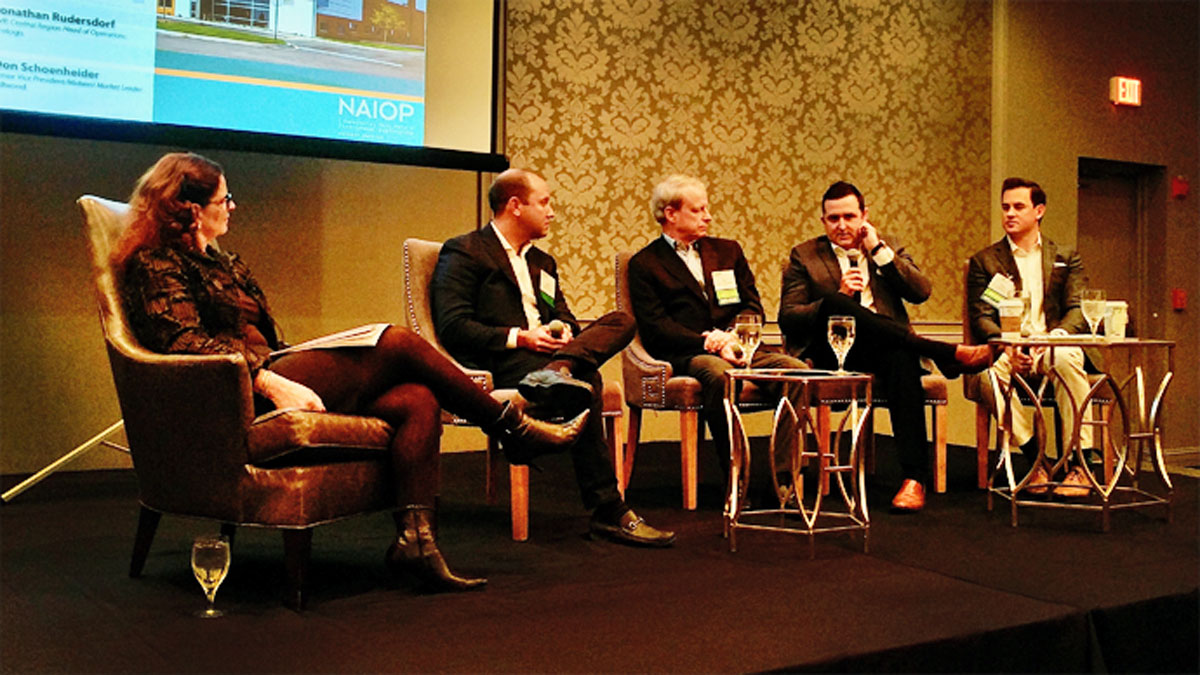Trending
Industrial developers narrow focus to “last mile” sites as space gets tighter
A panel of developers on Thursday predicted the market will shift from cavernous spec facilities to smaller infill opportunities

Chicago-area industrial developers might see an end to their torrential construction of campus-sized spec warehouses, instead shifting to a broader base of smaller projects across the metro area.
A panel of leaders convened by NAIOP representing four development firms agreed Thursday the dwindling availability of vacant land is slowing mega-scale industrial development, but low vacancy rates and reliably fierce tenant demand are staving off fears they’ve over-built.
Matt Goode, a principal of the Rosemont-based Venture One Real Estate, said his firm sees “amazingly strong velocity” in sales of smaller warehouses, even as the past year saw a relative dearth of “million-square-footers.”
“As you get smaller and infill a lot of that empty space, concessions are coming down, from the landlord’s perspective,” Goode said. “You’re seeing the market get stronger the smaller you get.”
Shrinking availability and skyrocketing rents have been pushing developers to smaller and cheaper cities, said Cushman & Wakefield managing principal Victoria Noonan, who moderated the discussion hosted by the Chicago chapter of NAIOP.
Noonan showed a side-by-side comparison of Chicago-area industrial trends against an amalgam of four smaller cities — Columbus, Indianapolis, Cincinnati and Louisville — with the group of smaller markets posting lower vacancies, more space under construction and higher rates of property absorption.
“We’ve seen a slow-down here compared to these other markets,” Noonan said.
But even inside Chicago, those same affordability pressures are broadening the opportunities for developers to scout out “last-mile distribution” sites in neighborhoods where rent is relatively cheap, according to Matt Kurucz, a Chicago-based director of the Dallas-based Crow Holdings.
“As we sit on our couches and order stuff, we’re expecting that stuff to get here sooner and sooner,” Kurucz said. “And I can’t get that stuff today if it’s all coming from the same warehouse in Chicago.”
Investment sales of Chicago-area industrial sites totaled nearly $3 billion during the first nine months of 2018, on pace to break records by the end of the year, according to a report released earlier this month by Newmark Knight Frank. The flurry of sales and leasing activity has pushed the region’s industrial vacancy rate to its lowest point since 2001.
About 6.8 million square feet of Chicago-area industrial space was leased during the first half of the year, making it one of the top markets in country, according to CBRE.




